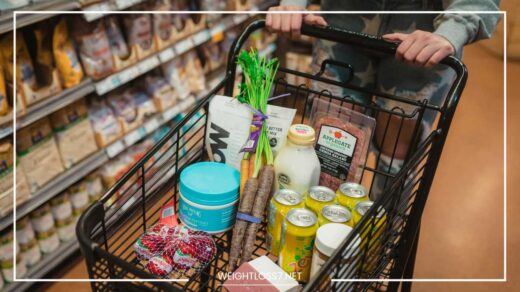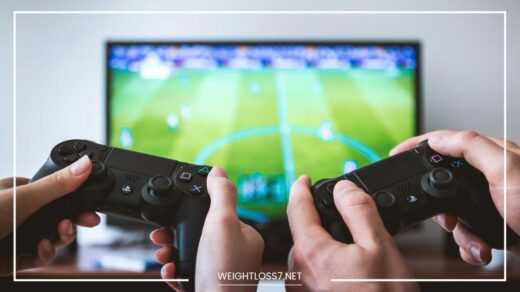How to Cut Weight

Healthy Weight
How to Cut Weight: A Sustainable Guide for Lasting Results
Shedding pounds can feel like an uphill battle. Fads and crash diets promise quick fixes, but often leave you feeling deprived and frustrated. The truth is, healthy weight loss is about creating sustainable habits you can maintain for the long term.
This guide will equip you with the knowledge and tools to achieve your weight loss goals in a safe and effective way. We’ll explore:
- Understanding Weight Loss: We’ll break down the science of weight loss and dispel common myths.
- Creating a Calorie Deficit: Learn how to calculate your calorie needs and create a sustainable deficit for weight loss.
- Building a Balanced Diet: Discover the importance of macronutrients and how to create a healthy eating plan that keeps you satisfied.
- The Power of Protein: We’ll delve into the benefits of protein for weight loss and muscle building.
- Fiber for Feeling Full: Explore the role of fiber in keeping you feeling satisfied and reducing hunger pangs.
- Staying Hydrated: Learn how drinking enough water can aid weight loss and boost your overall health.
- Moving Your Body: Discover the different types of exercise that can help you burn calories and build muscle.
- Mindful Eating: We’ll explore strategies for mindful eating to develop a healthy relationship with food.
- Building Sustainable Habits: Learn how to set realistic goals, navigate social situations, and stay motivated on your weight loss journey.
Understanding Weight Loss: Calories In vs. Calories Out
Weight loss boils down to basic physics: calories in versus calories out. Your body burns calories throughout the day to maintain its basic functions and fuel your activities.
If you consume more calories than you burn, your body stores the excess as fat. To lose weight, you need to create a calorie deficit, meaning you burn more calories than you consume.
Here’s a myth to debunk: spot reduction isn’t possible. You can’t target specific fat stores through exercise alone. Consistent calorie restriction and exercise will lead to overall weight loss, including belly fat.
Creating a Calorie Deficit: Finding Your Sweet Spot
The key to a sustainable calorie deficit is finding a level you can comfortably maintain. Crash diets that drastically restrict calories may lead to rapid weight loss, but they’re also unsustainable and can be unhealthy. Aim for a gradual weight loss of 1-2 pounds per week.
Here’s how to calculate your calorie needs:
- Basal Metabolic Rate (BMR): This is the number of calories your body burns at rest to maintain basic functions. There are online calculators or apps that can estimate your BMR based on factors like age, weight, height, and gender.
- Activity Level: Multiply your BMR by a number reflecting your activity level (sedentary, lightly active, moderately active, etc.) to estimate your total calorie expenditure (TDEE).
To create a calorie deficit, subtract 500-1000 calories from your TDEE. This is a starting point; you may need to adjust it based on your weight loss progress.
Building a Balanced Diet: Macronutrients for Success
Food is not the enemy! A balanced diet rich in whole foods provides the nutrients your body needs to function optimally and fuels your weight loss journey. Let’s talk macronutrients:
- Carbohydrates: Carbs get a bad rap, but they’re an essential source of energy. Choose complex carbs like whole grains, fruits, and vegetables for sustained energy and fiber. Limit refined carbs like white bread, pastries, and sugary drinks. These can cause blood sugar spikes and crashes, leading to increased hunger and cravings.
- Protein: Protein is crucial for building and repairing muscle tissue, which helps boost metabolism and burn more calories. Lean protein sources include chicken, fish, beans, lentils, and tofu. Aim for 0.8-1 gram of protein per pound of body weight to support muscle mass and satiety.
- Healthy Fats: Don’t fear fat! Healthy fats like those found in nuts, seeds, avocados, and olive oil promote satiety, support hormone regulation, and improve nutrient absorption. Include healthy fats in moderation to keep you feeling satisfied and prevent overeating.
Focus on filling your plate with plenty of fruits, vegetables, and whole grains. Include lean protein sources in every meal and incorporate healthy fats in moderation. Here are some additional tips for building a balanced diet:
- Read Food Labels: Pay attention to serving sizes and calorie content. Be mindful of added sugars and unhealthy fats often hidden in processed foods.
- Plan Your Meals: Planning your meals and snacks in advance helps you make healthy choices and avoid unhealthy temptations when hunger strikes.
- Cook More at Home: Cooking at home allows you to control the ingredients and portion sizes of your meals.
The Power of Protein: Your Weight Loss Ally
Protein is a powerhouse nutrient when it comes to weight loss. Here’s why it deserves a starring role in your diet:
- Increased Satiety: Protein keeps you feeling fuller for longer, reducing cravings and helping you manage portion control. This is because protein takes longer to digest than carbohydrates and triggers the release of hormones that signal satiety.
- Muscle Building and Preservation: Muscle mass is metabolically active, meaning it burns calories even at rest. Building and maintaining muscle with adequate protein intake helps boost your metabolism and increase calorie burning throughout the day. This is particularly important during weight loss, as muscle loss can occur if protein intake is insufficient.
- Improved Blood Sugar Control: Protein helps regulate blood sugar levels, preventing the spikes and crashes that can lead to increased hunger and cravings for sugary foods.
How Much Protein is Enough?
Aim to include protein sources like chicken breast, salmon, lentils, or Greek yogurt at each meal. A general guideline is to consume 0.8-1 gram of protein per pound of body weight.
However, your individual needs may vary depending on factors like activity level and weight loss goals.
Here are some tips for incorporating protein into your diet:
- Start Your Day with Protein: Studies show that eating protein at breakfast can increase satiety and reduce calorie intake throughout the day. Scramble eggs, Greek yogurt with berries and nuts, or a protein smoothie are all great options.
- Snack Smart: Choose protein-rich snacks like nuts, seeds, hard-boiled eggs, or cottage cheese to keep hunger pangs at bay.
- Variety is Key: Explore different protein sources beyond chicken and fish. Beans, lentils, tofu, tempeh, and even Greek yogurt offer vegetarian and vegan-friendly protein options.
Fiber for Feeling Full: The Satiety Solution
Fiber is another dietary hero for weight loss. It promotes a feeling of fullness, helping you eat less and reducing calorie intake. Here’s how fiber works its magic:
- Slows Digestion: Fiber-rich foods take longer to digest, keeping you feeling satisfied for longer and preventing overeating.
- Promotes Gut Health: Fiber is essential for healthy gut bacteria, which play a role in regulating appetite and metabolism.
- Blood Sugar Control: Like protein, fiber helps regulate blood sugar levels, preventing the spikes and crashes that can lead to cravings and overeating.
Fiber Powerhouses:
Fruits, vegetables, whole grains, and legumes are all excellent sources of fiber. Here are some tips to increase your fiber intake:
- Choose Whole Grains Over Refined: Opt for brown rice, quinoa, whole-wheat bread, and whole-wheat pasta instead of their refined counterparts.
- Load Up on Vegetables: Aim for at least 5 servings of vegetables per day. Include a variety of colors for a wider range of nutrients and fiber content.
- Don’t Forget Fruits: Fruits are a great source of fiber and essential vitamins. Choose whole fruits over fruit juices, which are often high in sugar and lack the fiber content of the whole fruit.
- Snack on Beans and Legumes: Beans, lentils, and chickpeas are packed with protein and fiber, making them a satiating and nutritious snack option.
Staying Hydrated: Water is Your Weight Loss Best Friend
Drinking enough water is crucial for overall health and weight loss. Here’s why:
- Boosts Metabolism: Studies suggest that drinking water can slightly increase metabolism, leading to a small increase in calorie burning.
- Reduces Hunger Pangs: Sometimes, thirst can be mistaken for hunger. Drinking water can help curb false hunger cues and prevent unnecessary snacking.
- Aids Digestion: Proper hydration helps keep your digestive system functioning optimally, which is essential for nutrient absorption and overall well-being.
How Much Water Should You Drink?
The recommended daily water intake can vary depending on factors like body weight, activity level, and climate. A general guideline is to aim for eight 8-ounce glasses of water per day.
You can also monitor your urine color. Pale yellow urine indicates good hydration, while dark yellow urine suggests dehydration.
Tips for Staying Hydrated:
- Carry a Reusable Water Bottle: Having a water bottle with you throughout the day serves as a constant reminder to drink.
- Flavor it Up: Add slices of cucumber, lemon, or berries to your water for a refreshing twist.
- Choose Water Over Sugary Drinks: Ditch sugary sodas, juices, and sports drinks that are packed with empty calories. Opt for water or unsweetened tea and coffee instead.
By following these tips and making small adjustments to your diet, you can create a sustainable and effective approach to weight loss.
Moving Your Body: Exercise for Weight Loss and Overall Health
Exercise is a crucial component of any weight loss plan. It not only helps you burn calories but also offers a wealth of other health benefits, including:
- Increased Calorie Burning: Physical activity burns calories during your workout and contributes to a higher metabolic rate, helping you burn more calories even at rest.
- Muscle Building and Preservation: As discussed earlier, muscle mass is metabolically active. Strength training exercises help build and maintain muscle, boosting your metabolism and promoting long-term weight management.
- Improved Mood and Energy Levels: Exercise releases endorphins, hormones that have mood-boosting and energy-enhancing effects. Regular physical activity can help combat fatigue and improve your overall well-being.
- Reduced Disease Risk: Exercise is a powerful tool for reducing the risk of chronic diseases such as heart disease, type 2 diabetes, and some cancers.
Finding the Right Exercise for You:
The key to sticking with an exercise routine is finding activities you enjoy. Here are some options to consider:
- Cardio: Aim for at least 150 minutes of moderate-intensity cardio or 75 minutes of vigorous-intensity cardio per week. Activities like brisk walking, running, swimming, cycling, or dancing are all great options.
- Strength Training: Include strength training exercises that target all major muscle groups at least twice a week. You can use bodyweight exercises, free weights, or weight machines.
Don’t forget the importance of consistency: Aim for at least 30 minutes of moderate-intensity exercise most days of the week. Even small bursts of activity throughout the day can make a difference. Here are some tips for incorporating exercise into your routine:
- Find a Workout Buddy: Partnering up with a friend or family member for workouts can increase accountability and make exercise more enjoyable.
- Make it Fun: Explore activities you find genuinely fun, whether it’s dancing, hiking, playing a sport, or taking a fitness class.
- Start Slowly and Gradually Increase Intensity: Don’t try to do too much too soon. Begin with a manageable exercise routine and gradually increase intensity and duration as your fitness level improves.
- Listen to Your Body: Take rest days when needed and don’t push yourself through pain.
Mindful Eating: Cultivating a Healthy Relationship with Food
Mindful eating is a practice that involves paying attention to your body’s hunger and fullness cues, and making conscious choices about what and how you eat. Here’s how mindful eating can support your weight loss journey:
- Slow Down and Savor: Eating slowly allows you to register feelings of fullness and prevents overeating. Put down your phone and distractions, focus on the taste and texture of your food, and chew thoroughly.
- Identify Emotional Eating: Sometimes, we eat to cope with stress, boredom, or other emotions. Mindful eating can help you recognize emotional triggers and choose healthier coping mechanisms.
- Enjoy the Experience: Food should be pleasurable, not something to feel guilty about. Savor your meals and focus on the nourishment you’re providing your body.
Tips for Mindful Eating:
- Practice Gratitude: Take a moment before each meal to express gratitude for the food on your plate.
- Minimize Distractions: Turn off the TV, put away your phone, and focus on your meal when eating.
- Start Small: Begin by incorporating mindful eating practices into one meal per day, and gradually extend it to all your meals and snacks.
Building Sustainable Habits: The Key to Long-Term Success
Sustainable weight loss is all about creating healthy habits you can maintain for the long term. Here are some tips to help you stay motivated and on track:
- Set SMART Goals: Set Specific, Measurable, Achievable, Relevant, and Time-bound goals. Instead of aiming to “lose weight,” set a goal to “lose 1 pound per week for the next 4 weeks.”
- Find Your Support System: Surround yourself with positive and supportive people who encourage your healthy lifestyle choices.
- Track Your Progress: Keeping a food diary or using a weight loss app can help you track your progress and stay motivated.
- Celebrate Non-Scale Victories: Don’t just focus on the number on the scale. Celebrate non-scale victories like increased energy levels, improved mood, and fitting better into your clothes.
- Allow for Occasional Indulgences: Deprivation can lead to overeating later. Allow yourself occasional treats in moderation to avoid feeling restricted.
- Focus on Progress, Not Perfection: There will be setbacks along the way. Don’t let them derail your progress. Get back on track and keep moving forward.
Remember, weight loss is a journey, not a destination. By making small, sustainable changes to your diet

















